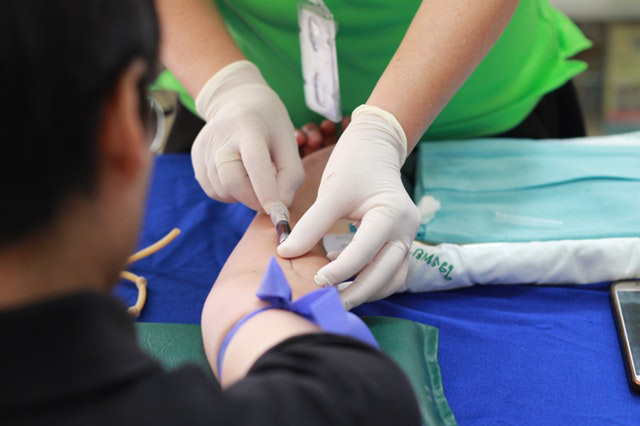Some Known Details About Northeast Medical Institute - New Haven Campus Phlebotomy Course & Cna Class
Some Known Details About Northeast Medical Institute - New Haven Campus Phlebotomy Course & Cna Class
Blog Article
Indicators on Northeast Medical Institute - New Haven Campus Phlebotomy Course & Cna Class You Need To Know
Table of ContentsExamine This Report about Northeast Medical Institute - New Haven Campus Phlebotomy Course & Cna ClassAll About Northeast Medical Institute - New Haven Campus Phlebotomy Course & Cna ClassNortheast Medical Institute - New Haven Campus Phlebotomy Course & Cna Class Can Be Fun For AnyoneNot known Details About Northeast Medical Institute - New Haven Campus Phlebotomy Course & Cna Class An Unbiased View of Northeast Medical Institute - New Haven Campus Phlebotomy Course & Cna ClassNortheast Medical Institute - New Haven Campus Phlebotomy Course & Cna Class Fundamentals Explained
Nevertheless, making use of such tools must be come with by various other infection prevention and control practices, and training in their use. Not all security gadgets apply to phlebotomy. Prior to choosing a safety-engineered device, users ought to completely examine readily available gadgets to establish their proper use, compatibility with existing phlebotomy techniques, and effectiveness in protecting team and clients (12, 33).For setups with reduced resources, expense is a motoring factor in purchase of safety-engineered tools. Where safety-engineered tools are not offered, competent usage of a needle and syringe is appropriate.
Among the essential pens of high quality of treatment in phlebotomy is the participation and collaboration of the patient; this is mutually beneficial to both the health worker and the client. Clear details either written or verbal must be offered per client who undertakes phlebotomy. Annex F offers sample message for discussing the blood-sampling procedure to an individual. labelling); transportation problems; analysis of outcomes for professional monitoring. In an outpatient division or facility, supply a dedicated phlebotomy cubicle containing: a tidy surface area with 2 chairs (one for the phlebotomist and the other for the patient); a hand laundry basin with soap, running water and paper towels; alcohol hand rub. In the blood-sampling room for an outpatient division or clinic, give a comfy reclining couch with an arm remainder.
Little Known Facts About Northeast Medical Institute - New Haven Campus Phlebotomy Course & Cna Class.
Make sure that the indicators for blood tasting are clearly defined, either in a created method or in recorded directions (e.g. in a lab type). At all times, follow the approaches for infection avoidance and control detailed in Table 2.2. Infection prevention and control practices. Collect all the tools needed for the treatment and location it within safe and very easy reach on a tray or trolley, making certain that all the items are clearly visible.
Where the client is adult and conscious, comply with the actions laid out listed below. Present yourself to the client, and ask the client to state their complete name. Inspect that the lab form matches the person's identification (i.e. match the individual's information with the laboratory type, to make certain accurate identification). Ask whether the license has allergies, phobias or has actually ever fainted throughout previous injections or blood draws.
Make the client comfortable in a supine placement (if possible). The patient has a right to decline an examination at any type of time prior to the blood tasting, so it is vital to make sure that the patient has understood the procedure - PCT Training.
All about Northeast Medical Institute - New Haven Campus Phlebotomy Course & Cna Class
Prolong the client's arm and evaluate the antecubital fossa or forearm. Situate a vein of a good dimension that shows up, straight and clear. The representation in Area 2.3, reveals usual settings of the vessels, however many variants are feasible. The typical cubital blood vessel exists between muscles and is generally the most easy to pierce.
DO NOT place the needle where veins are diverting, due to the fact that this increases the chance of a haematoma. Finding the blood vessel will assist in determining the appropriate dimension of needle.
Samplings from main lines bring a threat of contamination or incorrect laboratory test outcomes. It is acceptable, yet not ideal, to attract blood samplings when very first presenting an in-dwelling venous gadget, before connecting the cannula to the intravenous fluids.
All about Northeast Medical Institute - New Haven Campus Phlebotomy Course & Cna Class
Failing to permit adequate check out this site get in touch with time boosts the threat of contamination. DO NOT touch the cleansed website; in specific, DO NOT position a finger over the capillary to assist the shaft of the revealed needle.
Ask the person to form a fist so the blood vessels are extra prominent. Get in the blood vessel quickly at a 30 level angle or much less, and remain to present the needle along the capillary at the simplest angle of entrance - PCT Training. When adequate blood has actually been collected, release the tourniquet BEFORE taking out the needle
Not known Incorrect Statements About Northeast Medical Institute - New Haven Campus Phlebotomy Course & Cna Class
Withdraw the needle delicately and use gentle pressure to the site with a tidy gauze or dry cotton-wool round. Ask the individual to hold the gauze or cotton wool in location, with the arm expanded and increased. Ask the individual NOT to flex the arm, since doing so creates a haematoma.

Northeast Medical Institute - New Haven Campus Phlebotomy Course & Cna Class for Dummies
Where possible, keep the tubes in a shelf and relocate the rack in the direction of you - https://www.pubpub.org/user/marvin-gordon. If the example tube does not have a rubber stopper, inject extremely gradually into the tube as reducing the pressure and rate used to move the specimen reduces the threat of haemolysis.

Report this page